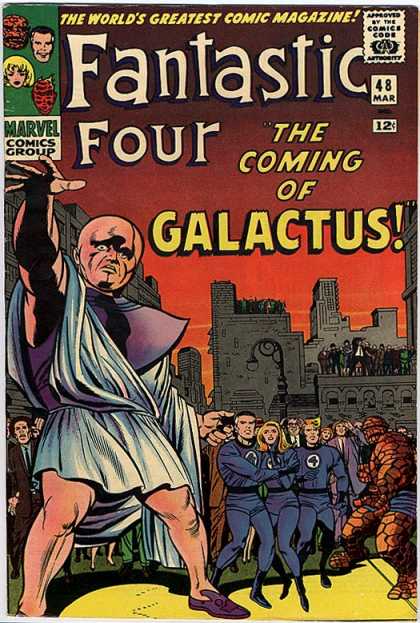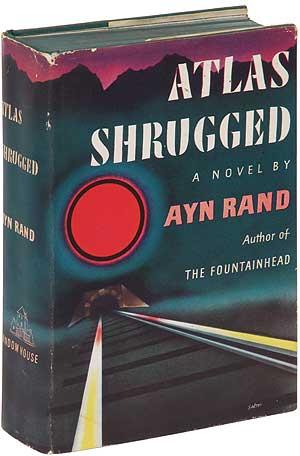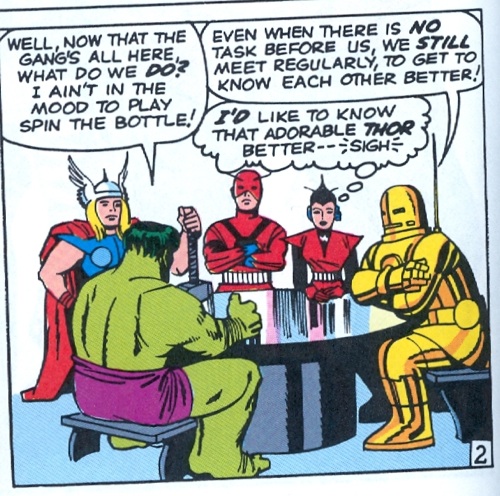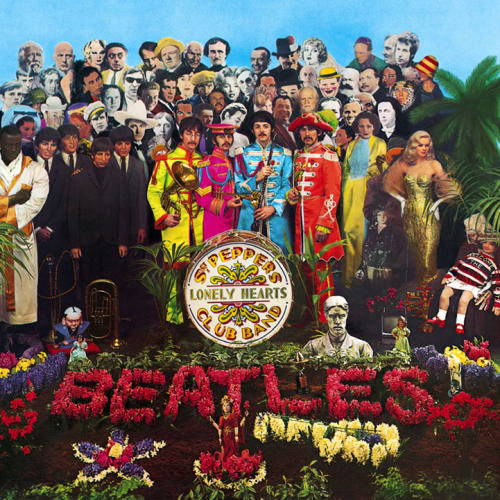The Argonaut Folly (part 3 of 3)
By:
June 10, 2009
An abridged version of this essay appeared in the journal n+1 (Winter 2007).
PART ONE | PART TWO | PART THREE

By the end of World War II and the early years of the Cold War, utopianism was on the wane. How could any program of radical social transformation be taken seriously after the Holocaust and the Moscow trials? In 1952, Reinhold Niebuhr spoke for the chastened ex-socialist writers and editors of Partisan Review when he rejected the widespread utopianism of the ’30s as “an adolescent embarrassment.” Where did that leave the Argonaut Folly?
The anarchistic Dwight Macdonald, who had split with Rahv and Partisan Review in the early ’40s, and who’d launched his own journal, politics, in ’47, never joined the anti-utopian camp. Neither did author and politics co-founder Mary McCarthy, whose 1949 novella, The Oasis, is a fine example of the American tradition of discovering an Argonaut Folly in the failure of a utopian project. The Oasis re-tells the story of Macdonald’s breakup with Rahv as a realistic fable about Utopia, a colony established, at a disused Vermont hotel, by intellectuals in retreat from wartime New York. Here, the “purists,” led by Macdougal Macdermott (Macdonald) quarrel endlessly over first principles with the “realists,” chastened leftists led by Will Taub (Rahv). Like Hawthorne’s Coverdale (who first praises Blithedale’s mission, “showing mankind the example of a life governed by other than the false and cruel principles on which human society has all along been based,” then rejects it), McCarthy has Katy Norell, a semi-autobiographical character, conclude that every utopian colony which “treats itself as a kind of factory or business for the manufacture and export of morality” is destined to fail. Though Norell abandons her naïve utopianism, she begins to imagine a “new pattern” — neither wholly purist nor wholly realist, which is to say anti-anti-utopian — for the colony.

Ayn Rand, who had studied Nietzsche closely in postrevolutionary Petrograd, attempted to imagine an anti-utopian Argonaut Folly in her 1957 science fiction novel, Atlas Shrugged. The pro-capitalist potboiler is set partly in Galt’s Gulch, a fictional Colorado valley into which “the men of ability, the men of the mind,” no longer willing to sacrifice their talents to their mediocre contemporaries, have secretly withdrawn. (The 1923 British SF novel Nordenholt’s Million, by J.J. Connington, has a similar plot, though it takes an eco-catastrophe to set things in motion.) Life imitates art: neoconservative ideologues have, in recent decades, espoused a Nietzschean revolt of elites. Paul Wolfowitz, Richard Perle, and William Kristol, among others who studied with or were influenced by Leo Strauss, the classical scholar who praised Nietzsche as a guide to the leveling impulse at work in democracy, club together in think tanks and one tight-knit group named after the Roman god of weapon-making, Vulcan. So are these Argonaut Follies, too? I would disqualify them. George W. Bush’s foreign policy advisers more resemble Jason’s scheming uncle, who cynically sends the Argonauts off on a quest he believes to be impossible. They do not want to break free of the established system. They wish to run the jail.
Anti-anti-utopian narratives began to reappear in the Sixties and Seventies via the offbeat science fiction novels of writers like Philip K. Dick, Ursula K. LeGuin, and Samuel R. Delany, as Fredric Jameson argues in Archaeologies of the Future: The Desire Called Utopia and Other Science Fictions. But science-fiction writers tend to imagine entirely new social orders. With the exception of post-apocalyptic novels, in which ragtag survivors form small communities — and perhaps Olaf Stapledon’s Odd John (1935), in which an international band of teenage and twentysomething “supernormals” (or “wide-awakes”) form an island colony, where they can devote themselves to “individualistic communism” and the founding of a new mutant species — the genre hasn’t given us many Argonaut Follies. These reappeared, around the same time, in another, equally adolescent narrative medium: the superhero comic book.

In 1961, comic-book editor and writer Stan Lee collaborated with the talented artist Jack Kirby to invent a superhero team that would compete with The Justice League of America, a popular but dull series about uncomplicated superheroes who — like the Argonauts about whom we read in bowdlerized myths — get along just fine. With The Fantastic Four, Lee, who in the 1974 book, Origins of Marvel Comics, describes himself as a “vociferous reader” of mythology, gave the world a team of quarrelsome heroes. Their godlike abilities — the ill-tempered, mighty Thing, for example, is a new Hercules — render them misfits, losers, outsiders among their fellow humans. Together, however, their team is greater than the sum of its parts. This was a winning formula; Lee and Kirby’s readers were eager for fictional Argonaut Follies. They got plenty of ’em.
In ’63, Lee and Kirby launched The X-Men, a comic about teenage mutants who’d been ostracized from their hometowns, and who lived together in a mansion in the suburbs of New York. Myth was mined: the ill-tempered Beast is another Hercules, the Angel is a winged son of the North Wind, Professor X is a seer, and then there’s Cyclops. That same year, Lee and Kirby created The Avengers, a comic about a Justice League-type group of heroes whose number included Thor, whom Lee had earlier borrowed from Norse mythology, and the Hercules-like Hulk; their headquarters was a mansion on New York’s upper East Side. In ’65, Lee and Kirby’s Inhumans made their debut in issue #44 of Fantastic Four: Black Bolt, Crystal, Karnak, and two others straight out of Greek myth, Medusa and Gorgon, were a peripatetic team of super-powered mutants, exiled from their secret homeland in the Himalayas. Of all the Argonaut Follies dreamed up by Lee and Kirby, the Inhumans are the most romantic — by which, I mean they’re the least sympathetic, the most doomed.

Lee and Kirby’s contemporary mythos influenced readers who would leave their mark on the era we today think of as the Sixites. Shortly after the debut of The X-Men, 28-year-old Ken Kesey moved to a rural property outside of San Francisco and invited a multitalented group, later known as the Merry Pranksters, along. In a semi-autobiographical screenplay that Kesey would write in ’66, the Kesey-based character, sometimes referred to as Professor X, calls his Pranksters the “X-Men.” These were Argonauts on acid.
Science fiction and comic books weren’t the only type of adolescent pop culture production to produce influential Argonaut Follies. In their movies, from Help! (1965) to Magical Mystery Tour (1967) to Yellow Submarine (1968), the Beatles were portrayed — or portrayed themselves — as housemates whose deep-seated differences were a productive source of creativity. Nor were the Beatles’ efforts to form an Argonaut Folly restricted to the screen. Their Apple Corps Ltd, an exercise in “Western Communism” headquartered on Savile Row, was a failed Argonaut Folly. And in ’67, the Beatles decided to purchase Leslo, a Greek island on which they were going to build an elaborate structure — four homes, all connected to a central studio — where they could live and work in convivial isolation. “We’re all going to live there, perhaps forever, just coming home for visits,” John told Beatles biographer Hunter Davies, at the time. “There’s some little houses on there which we’ll do up and knock together. It will be amazing…. We can set a studio up and just make our albums, swim about in the Aegean and get stoned.” It sounds as though John, like David Bowie, was an Olaf Stapledon fan. But the “Beatledome,” as wags dubbed it, was never built.

Like Lee and Kirby’s comics, the Beatles’ productions played a key role in the invention of The Sixties. In 1967, according to Abbie Hoffman’s autobiography, inspiration for the Yippies — heroic political pranksters regarded by many of their peers (to this day) as a confederacy of dunces — was found on the cover of Sgt. Pepper’s Lonely Hearts Club Band. Check it out: The album’s illustration asks us to imagine a trans-historical Argonaut Folly in which the Beatles rub elbows with the likes of Edgar Allan Poe, Oscar Wilde, and Lenny Bruce.
There have been other Argonaut Follies — the Situationists; the Nouveau Réalistes; the Playboy Mansion, circa 1961-66; Public Image Ltd, the postpunk outfit made up of ex-members of The Sex Pistols and the Clash, who lived and worked together at John Lydon’s Victorian house in London — and yet where are we now? Anti-utopianism has gone from a neoconservative ideology to common sense. Everything today encourages us to see the dark side, the folly, the impossibility, not just of utopia but of an anti-anti-utopian social order where we’d have a project in common besides selling our commodified labor, intellectual or otherwise. Everything encourages us to think we face a choice between detached houses in a row, where we cook our dinners in private, or the gulag.
But there can be — can’t there? — community without tyranny. Sure, the company of other misfits would make you feel bad sometimes; but it also feels bad to have nothing to look forward to but domesticity, work, and TV. Maybe the Argonaut Folly can only be a failure — unless it’s a perverted, for-profit version, like Playa Grande, the Dominican Republic island property being developed by Moby, Charlie Rose, Alex von Furstenberg, and Fareed Zakaria, where “artists and writers would be invited to stay at cost and the moguls and moneymen who’d financed the place could vacation, play golf and bask in the glow of their artsy neighbors,” as The New York Observer put it. (One also hears rumors about DJ Spooky’s Vanuatu Pacifica Project.) Of course, atomized life under the sign of the market is doomed to failure, too, if we think of excitement, joy, or surprise.
The dream dies hard. So permit me a lonelyhearts ad of my own: I seek talented individuals who — like the Blithedale colonists, who’d “gone through such an experience as to disgust them with ordinary pursuits but who were not yet so old, nor had suffered so deeply, as to lose their faith in the better time to come” — are neither so mature as to be anti-utopian nor so adolescent as to be naively utopian. I don’t know what we’ll do, once we’ve found one another. But is it too much to ask that you should get in touch?
Farewell, heroic, happy breed of men! Your blessing on this lay of mine. And as the years go by, may people find it a sweeter and yet sweeter song to sing.
PART ONE | PART TWO | PART THREE
MORE FURSHLUGGINER THEORIES BY JOSH GLENN: TAKING THE MICKEY (series) | KLAATU YOU (series intro) | We Are Iron Man! | And We Lived Beneath the Waves | Is It A Chamber Pot? | I’d Like to Force the World to Sing | The Argonaut Folly | The Perfect Flâneur | The Twentieth Day of January | The Dark Side of Scrabble | The YHWH Virus | Boston (Stalker) Rock | The Sweetest Hangover | The Vibe of Dr. Strange | CONVOY YOUR ENTHUSIASM (series intro) | Tyger! Tyger! | Star Wars Semiotics | The Original Stooge | Fake Authenticity | Camp, Kitsch & Cheese | Stallone vs. Eros | The UNCLE Hypothesis | Icon Game | Meet the Semionauts | The Abductive Method | Semionauts at Work | Origin of the Pogo | The Black Iron Prison | Blue Krishma! | Big Mal Lives! | Schmoozitsu | You Down with VCP? | Calvin Peeing Meme | Daniel Clowes: Against Groovy | The Zine Revolution (series) | Best Adventure Novels (series) | Debating in a Vacuum (notes on the Kirk-Spock-McCoy triad) | Pluperfect PDA (series) | Double Exposure (series) | Fitting Shoes (series) | Cthulhuwatch (series) | Shocking Blocking (series) | Quatschwatch (series)
READ MORE essays by Joshua Glenn, originally published in: THE BAFFLER | BOSTON GLOBE IDEAS | BRAINIAC | CABINET | FEED | HERMENAUT | HILOBROW | HILOBROW: GENERATIONS | HILOBROW: RADIUM AGE SCIENCE FICTION | HILOBROW: SHOCKING BLOCKING | THE IDLER | IO9 | N+1 | NEW YORK TIMES BOOK REVIEW | SEMIONAUT | SLATE
